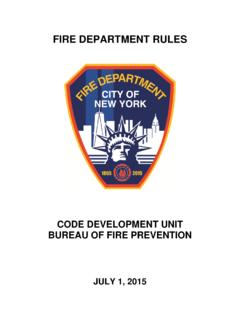Transcription of Safer for the Environment THE HIGH …
1 MAG Environmental and . Safety Considerations MAG is less irritating to the skin. MAG, unlike calcium chloride, is not noticeably exothermic (generates heat) when it first comes in contact with moisture. Magnesium chloride is unlikely to irritate the skin or burn the skin when it THE high PERFORMANCE ICE MELTER. contacts moist skin surfaces. MAG corrodes metal surfaces less. Tests show MAG to be significantly less corrosive than calcium chloride and sodium chloride on steel, tin and aluminum. Safer for the Environment MAG is Safer around vegetation. When used as directed, MAG is Safer to use around plants and bushes. In fact, magnesium chloride is used as an ingredient in some fertilizers. MAG is Safer on concrete.
2 Tests by the Strategic Highway Research Program, Washington , using 3% solutions (representative dilution of ice melting brines) show that calcium chloride caused 26 times and sodium chloride caused 63. times the amount of concrete spalling than MAG. MAG is Safer for use around animals and humans. MAG is much less toxic than calcium chloride, potassium chloride and sodium chloride based on data provided by the Department of Health and Human Services. In fact, a form of MAG is used as a mineral supplement in some farm animal feedstocks. MAG is environmentally friendlier. On a pound for pound basis, MAG contains approximately 22%, 29%, 39%, and 43% less chlorides than potassium chloride, calcium chloride (77%), calcium chloride (90%) and sodium chloride respectively, while still maintaining its high performance level.
3 The application of MAG results in significantly less chloride runoff and pollution than potassium chloride, calcium chloride and sodium chloride. Available Chloride Content 800-637-4504. 60. 50. 40. 30. 20. Sodium Chloride 10. Calcium Chloride (90%). Calcium Chloride (77%) 0. Potassium Chloride . MAG. 2004 Dead Sea Works Ltd. MAG is a registered trademark of Dead Sea Works Ltd. MAG Is Much LESS Toxic Than MAG Is Less Damaging to . MAG Is Less Corrosive Than . MAG Ice Melting Performance . MAG As An Ice Melter . Compares Favorably MAG is the best total ice melter. Compared to calcium chloride and sodium chloride Salt and Calcium Chloride Other Ice Melters Concrete Than Calcium Chloride With Calcium Chloride (Rock Salt), MAG is less corrosive towards metal surfaces, creates less concrete spalling, is less toxic, and is environmentally Safer .
4 Accidental ingestion by pets, animals and children is a concern to all of us. MAG is MAG is commonly used in the workplace. As this chart shows, MAG is less corrosive and Sodium Chloride much Safer than all other popular ice melting chemicals because of its very low on steel which can affect work equipment, piping, building infrastructure and more. Ice melting performance is measured not only by the speed of the melting action toxicity. The following is a chart of common chemical substances (and a few not so All ice melting chemicals lower the freezing point of water and increase the number The principal characteristics of MAG compared to calcium chloride and sodium MAG makes an altogether Safer work Environment .)
5 But also by the quantity of melted water produced per unit of ice melter used. The common) and their LD50 (Lethal Dose 50%) levels. of freeze/thaw cycles. As a result of water repeatedly freezing and expanding, chloride are: following graph compares the ice melting performance of MAG, calcium chloride concrete surfaces will tend to spall, scale or break into small chips. New concrete and sodium chloride. MAG Calcium Sodium surfaces and concrete of poor quality are particularly vulnerable to spalling. (Ice Chloride Chloride Toxicity Toxicity of of Common Common Chemicals Comparison of Corrosion on Steel melting chemicals should not be used on concrete less than one year old.) As shown (Corrosion Rate 10 Day Average) below in tests performed by the Strategic Highway Research Program (SHRP), Ice Melting Performance 11,900.
6 (Slightly Toxic). 12,000. Toxicity mg/kg (LD50)1 8100 1000 3000. (Low Toxicity) (Relatively high Toxicity) (Medium Toxicity) Dept. of Health & Human Services Registry National Research Council, Washington, , the use of MAG as an ice melter of Toxic Effects of Chemical Substances 10,000. 40 8,100 resulted in significantly less concrete spalling than calcium chloride or sodium chloride. 2 The data for MAG is for magnesium chloride Concrete Spalling/Chipping 223g hexahydrate, the data for calcium chloride is 8,000. 35 for calcium chloride anhydrous. 35. (mg/kg). LD50. 30. Melted 25 MAG. Ice Melting Effectiveness at 21 F3. 4,220. 6,000. 30 Comparison of Concrete Spalling After 15 minutes 27g 30g 12g 25. Water 20.
7 (Grams). After 60 minutes 36g 38g 32g 2,600 3,000. 4,000 20 (Per SHRP Test Method Using 3% Brine Solution). (Highly Toxic). 15. 1,000 1,000 1,260 2,000 15. Confirmed by 3 independent studies: SHRP, 10 Residue Clear Liquid Oily-Like Dry White 16. 192 10 Swedish VTI, and Virginia DOT. Cumulative weight of concrete 5 0 3% KCl lost due to scaling (in grams). Liquid Film Powder 0. Sodium Cyanide Strychine Caffeine Aspirin Calcium Chloride Detergent*. Potassium Chloride Sodium Chloride Baking Soda Vitamin C. 3% NaCl 0 MAG 3% CaCl2. 0 15 30 60 4 3% MgCl2 Mils Per Year (mpy). 250. Time In Minutes Corrosion Steel (mils/year) 200. MAG Calcium Chloride Sodium Chloride Corrosion Aluminum (mils/year)5 .375 (Less Safe) ( Safer ).
8 150. (Pellet) (Rock Salt) Data from University of Utah, Dept. of Metallurgical Engineering, Dr. Charles H. Pitt, Professor of Metallurgy. 6 *Sodium Dodecylbenzene Sulfonate 100. Corrosion Tin (mils/year) As shown by this data, a 3% magnesium chloride solution is less than 50% as corrosive towards steel as the next [LD50 is the amount of a substance (in mg per kg of body weight) expected to kill 50% of the test animals in a leading de-icer, at equal concentration. 50. The tests were performed by the Swedish VTI by spreading 10 grams of each ice melter evenly over an icy surface Chloride Content (pellet) controlled study. The larger the LD50 number the less toxic the material.] 0. at 21 F, well within the performance range of sodium chloride.
9 As the temperature drops, the performance of sodium chloride should degrade appreciably as it reaches its practical minimum melting point of +6 F. (flake) As shown by the data, MAG is less toxic than baking soda and table salt, chemicals we ingest on a daily basis. When Sodium compared to other ice melting chemicals, MAG is much less toxic and much Safer to use around animals, 15. Chloride Calcium 10. As seen by these tests, MAG is a highly effective ice melter comparing favorably with calcium chloride. When pets and humans. Chloride 5. considering that MAG is significantly less toxic, less corrosive, Safer on concrete, Safer to handle, leaves no residue Effective Melting Temperatures -13 F -25 F +20 F.
10 And has less chlorine, MAG is clearly the total ice melter. There is no other ice melter on the market today that MAG Number of freeze/thaw cycles compares with MAG. Notes: 1 Data from Dept. of Health and Human Services, Registry of Toxic Effects of Chemical Substances The 3% test concentrations of brine were used since ice melter brine typically dilutes itself to this level soon after it is larger the number, the less toxic the chemical. The data for MAG is for magnesium chloride hexahydrate, the data applied. After 15 freeze/thaw cycles, the use of sodium chloride resulted in over 63 times and calcium chloride for calcium chloride is for calcium chloride anhydrous. resulted in over 26 times the amount of concrete loss than MAG.






